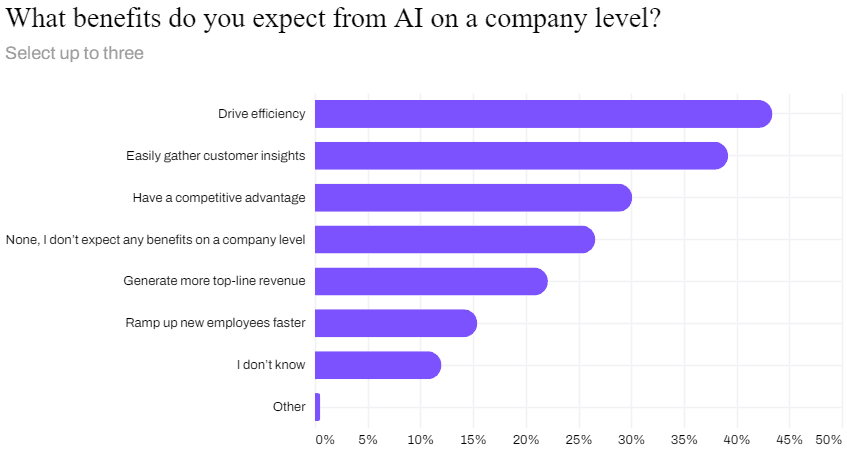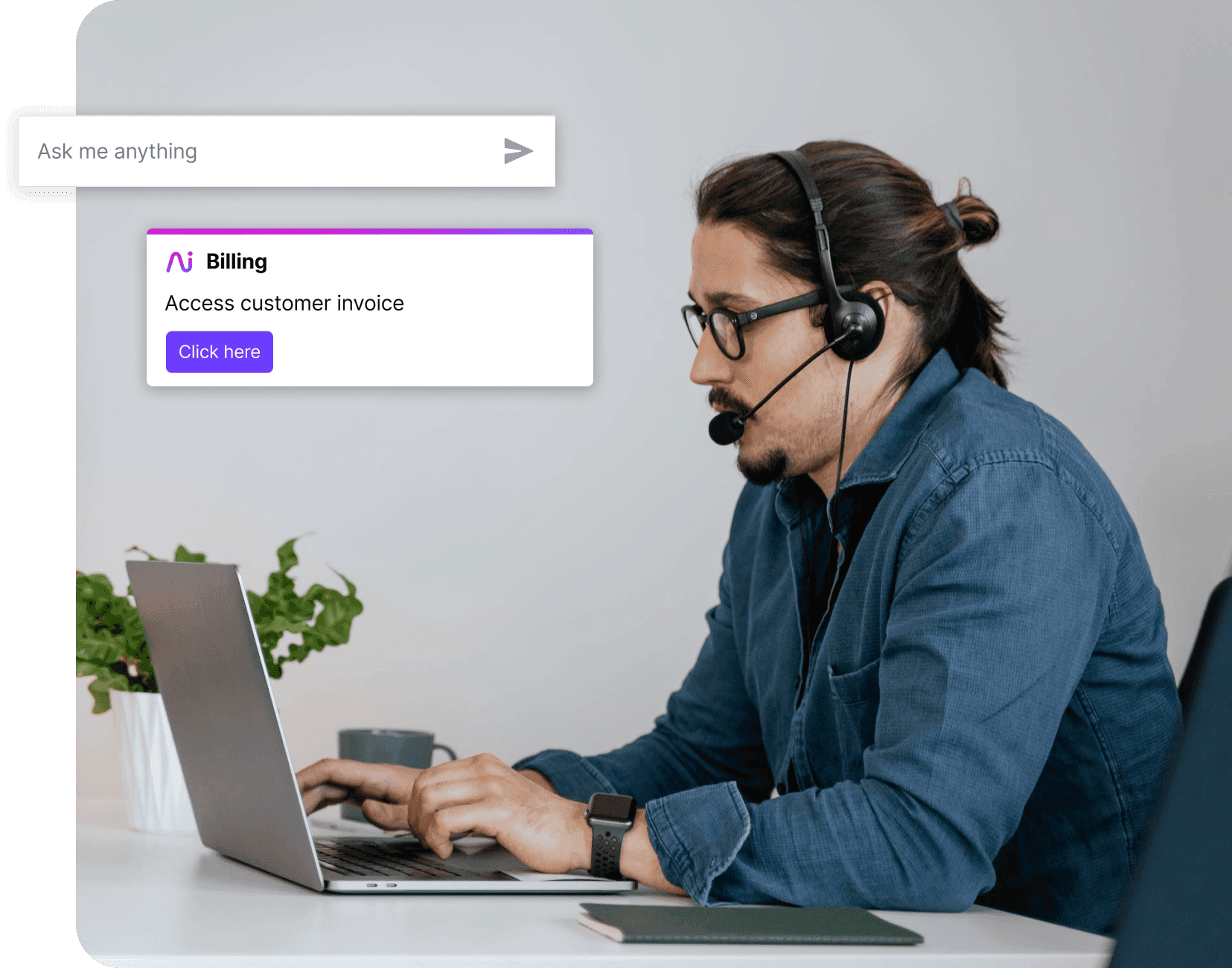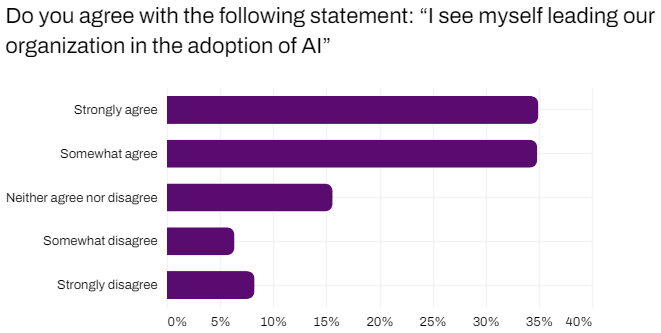Integrating AI and remote work enhances workplace productivity and innovation

Co-founder and CEO of Hubstaff

Share
When you examine the future of work and the workplace, two trends dominate discussions and research as companies seek to improve productivity and innovation: remote work and AI tools.
Artificial Intelligence (AI) is positioned as the way to transform the potential of employee productivity and remove limitations for large-scale projects and daily road bumps. It’s typically framed as the company-focused pathway for improvement.
Businesses often relegate remote work to a different track. Most people frame it as an employee benefit designed to improve work-life balance while protecting engagement and job satisfaction. This is an employee-centric value creator.
There’s more to the story here, however. Remote work can yield many positive benefits for companies, and AI can provide direct support for teams and how they view (and enjoy) their roles. We'll rely on two crucial studies to get a handle on the shift: Dialpad’s State of AI and the C-Suite 2024 and Hubstaff’s Remote Workers Engage in Deeper Work With Fewer Interruptions.
Tackling productivity
In recent years, remote work has proven its worth by allowing employees to focus more deeply with fewer distractions. Concurrently, AI is revolutionizing how we approach mundane tasks, automating them to free up teams and focus on important tasks.
Hubstaff data points to the distractions more specifically. We found that remote teams save nearly 62 hours each year because they experience more than 160 fewer disruptions to focus time annually.
That’s an extra week-and-a-half of work time just due to minimizing interruption downtime.
Integrating AI into a remote work setup can further enhance productivity by optimizing individual workflows and fostering a culture of continuous improvement and innovation. Imagine an environment where AI handles repetitive tasks, allowing remote employees to dedicate more time to strategic, high-value activities.
Efficiency is crucial for businesses aiming to optimize operations and streamline processes. By leveraging AI algorithms and automation, companies can boost productivity, minimize manual labor, and complete tasks more quickly and accurately. In fact, a state of AI at work report revealed that 43% of respondents expect efficiency to be the primary benefit of using AI.

This is likely one of many reasons Dialpad found that 77% of leaders believe AI will create a competitive advantage. It also makes sense in AI’s use for call notes and transcripts, allowing teams to freely and fully engage with team calls and activities instead of someone being a designated note taker.
You’re able to give every member a chance to be their most productive self instead of getting mired down in tasks that require focus but can prevent engagement.
Efficiency and enjoyment with cost reduction
Remote work inherently offers cost-saving benefits, such as reduced expenses on office spaces. Companies can save on rent, utilities, equipment, parking, etc. Employees can save on commuting costs and food expenses while reducing emissions and spending more time with family and friends.
AI takes this a step further by streamlining operations, contributing significantly to cost reduction. The data point to sales, CX, and general teams expecting AI to drive down expenses in their work.
When teams and people are better able to do their work — especially with reduced costs freeing up more budget for projects and minimizing manual, repetitive tasks — their enjoyment and engagement increase.
For remote teams, AI tools like AI virtual assistants and automated project management systems substantially reduce the time spent on administrative tasks, optimizing workflows, and providing analytical insights, all of which enhance efficiency while minimizing operational costs.

Businesses leveraging AI within their remote work practices stand to gain a competitive edge through increased operational agility and reduced overhead.
Remote workers already spend 22% more time on deep work in any given week than in-office workers. Pair that focus with remote work tools that minimize auxiliary tasks, and you free up your team to spend more time on the engaging work they enjoy.
Navigating Data Security in the Digital Workplace
Data security becomes a paramount concern as organizations rely more on digital tools. While powerful, AI introduces challenges like data leakage and privacy issues. Dialpad data notes that 42% of CxOs worry about security and compliance when it comes to AI.

We’ve seen many similar concerns around remote work environments. Their distributed nature has the potential to compound these security challenges.
To navigate this landscape, implementing end-to-end encryption and multi-factor authentication becomes essential. Best practices need to become company requirements, with specific policies for remote work. The same is true for AI usage.
There’s an opportunity here to examine how people work and where we utilize AI to manage tasks. Something as simple as reducing the need for people to multitask and jump between multiple systems and projects every day—which remote workers do less frequently than in-office teams—paired with automated AI options can minimize the chances for mistakes.
Regular training and awareness programs can further ensure that companies equip remote employees to handle data responsibly.
What is important here is that your AI tools, productivity optimizations, and workforce analytics systems meet industry compliance requirements, legislative requirements, and security best practices. What’s next might even be AI-driven security tools with stringent data protection policies tailored for remote work dynamics.
Reskilling for the AI-enhanced remote workplace
The rise of AI in the workplace necessitates a shift in skills, with 72% of CxOs planning to reskill workers for AI to benefit the company’s aims and people’s long-term careers.
Remote is likely in the same boat. Employee demands will drive the near-term level of remote work careers. While making up roughly 10% of U.S. job postings, remote jobs receive 46% of all job applications on LinkedIn. However, as those careers demonstrate preference and positive returns for companies, remote work will likely make more sense for more roles as the years go on.
The goal is to create a workforce that can adapt to changes and find ways to create a benefit for themselves and their companies. Tomorrow may bring a new opportunity or tool that changes how a common tactic is done. We need to help people understand how to adapt to these dynamic changes in the workplace.
For the future, companies' recurring goal is to build a workforce that is not only proficient in using AI tools but also capable of thinking critically about how to apply AI to solve complex problems. Remote work environments can uniquely support this transition through flexible virtual training sessions and online learning platforms.
By investing in AI education and training for remote employees, businesses can build a workforce poised to leverage AI tools effectively and ensure their teams are prepared for the demands of tomorrow’s workplace.
Cultivating a human-centric workplace
The initial promise of remote work for many was to ensure they could keep their careers and protect their families and health. People could be safe while the work didn’t have to stop, and revenue was generated.
That’s a promise of value to us as individuals and to the organizations where we work.
AI has similar potential. It can build a workplace where technology replaces many tasks and burdens we face. Companies can generate more returns, but they still need to have people at their core. That’s one reason we’re pleased by the high percentages of those looking at reskilling and broad employee support.
Tips for adding AI to a thriving workplace
While embracing AI and remote work, it’s crucial to focus on the human element. It's about building a workplace where technology enhances human potential, not replace it. Ensuring employee engagement, maintaining a healthy work-life balance, and creating a culture of trusting remote teams and ethically using AI is paramount.
Businesses must strive to create an environment where technology enhances human work without overshadowing the need for creativity, collaboration, and personal interaction. The potential is there, and remote teams’ familiarity with flexibility may help them lead the way.
When you want to add AI in and support that flexibility, a few different things can help.
Start with options that improve someone’s ability to do small tasks regardless of where they are.
For writing, ChatGPT and Writer are often suggested because they can simplify building outlines and frameworks before you add a personal touch. In areas like contact centers, Dialpad’s contact center AI can be a big benefit to helping teams address customer issues real-time while minimizing misunderstandings.
Sales teams can benefit from a variety of AI tools, many of which aren’t intrusive. Grammarly can check your messages to eliminate errors. HubSpot can automate workflows and email efforts so the right message is sent to the right lead. Drift and other tools can give you engagement scores to measure efforts and much more.
Each of these options supports team members and lets them focus on their best work. It’s a benefit to the employee by minimizing overly manual or time-consuming tasks. The company benefits through significant error reduction and workflow improvements.
When your sales or support team has the right options at their fingertips, it’s easier to deliver a positive customer experience that’s also enjoyable for your staff. Look for mutual wins and you’ll not only adopt beneficial AI tools, but team members will use them to their full potential and help your business reach new heights.
Looking to keep your remote team aligned and in sync?
Utilize Dialpad's communications platform to provide everyone with access to video conferencing, messaging, and more. Try it for free! Sign up in just a few minutes and receive a virtual phone number as well.
